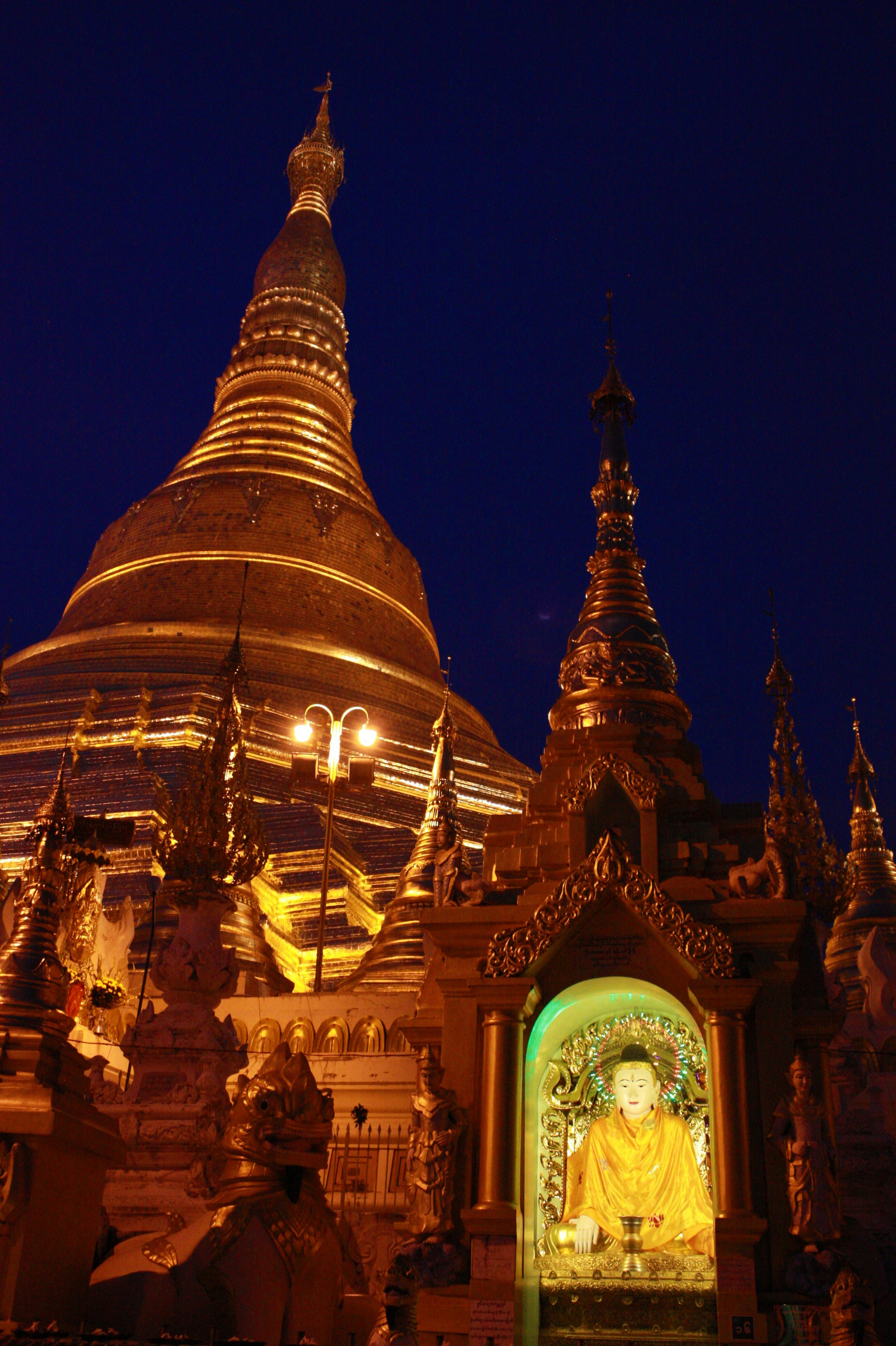Introduction to Buddhism: Learn More About Essential Buddhism in China
Buddhism is a profound and diverse religion that has shaped the spiritual and cultural landscape of Asia for centuries. Originating from the teachings of Siddhartha Gautama, known as the Buddha, this ancient Indian religion invites followers to explore the nature of suffering and the path to enlightenment. In this article, we will delve into the essential aspects of Buddhism, especially as it has evolved in China, highlighting its significance in both historical and contemporary contexts, including the role of Buddhist monasteries.

Buddhism: An Overview
What is Buddhism?
Buddhism, also referred to as Buddha Dharma, is a religion and philosophical tradition that emerged in the eastern Gangetic plain of ancient India during the 5th or 6th century BCE. As the world's fourth-largest religion, Buddhism is a religion with over 520 million followers, representing about 7% of the global population. The core teachings of Buddhism revolve around the Four Noble Truths, which address the nature of suffering (dukkha), its causes, and the path leading to liberation from the cycle of rebirth (samsara) as the Buddha taught. Buddhists strive to achieve enlightenment through the practice of Dharma, which includes following the Eightfold Path, a guide for ethical and mental development that ultimately leads to the cessation of suffering.
Historical Background of Buddhism
The historical roots of Buddhism can be traced back to the religious thoughts prevalent in Iron Age India around the middle of the first millennium BCE. This era was marked by significant socio-cultural transformations, including the rise of the Śramaṇa movements which challenged the established Vedic traditions. After the Buddha's death, his teachings were orally transmitted by his followers and later compiled into Buddhist texts. This oral tradition laid the groundwork for various schools of Buddhism, such as Theravada and Mahayana, which have evolved through centuries. The spread of Buddhism beyond India began in earnest during the reign of Emperor Ashoka in the 3rd century BCE, who actively promoted the religion across Asia, including regions that would later embrace Tibetan Buddhism and other forms of Buddhist practice.
Major Branches of Buddhism: Theravada, Mahayana, and Vajrayana
Buddhism is generally categorized into three main branches: Theravada, Mahayana, and Vajrayana. Theravada, often called the “School of the Elders,” is predominant in Sri Lanka and Southeast Asia, and emphasizes individual enlightenment and the attainment of nirvana. Mahayana, or the “Great Vehicle,” is a more inclusive form of Buddhism that focuses on the Bodhisattva ideal, wherein practitioners seek enlightenment not just for themselves but for all sentient beings. Vajrayana, frequently regarded as a subset of Mahayana, incorporates esoteric practices and rituals, particularly evident in Tibetan Buddhism. Each of these branches reflects the diverse beliefs and practices within the broader Buddhist tradition, allowing for a rich tapestry of spiritual exploration across cultures and time periods.
The Teachings of the Buddha
The Four Noble Truths
The Four Noble Truths form the cornerstone of Buddhist teachings, providing a framework for understanding the profound nature of suffering (dukkha) that permeates human existence. The first truth states that life is inherently marked by suffering, which manifests in various forms such as dissatisfaction, pain, and loss. The second truth identifies craving (samudaya) as the root cause of this suffering, stemming from attachment to desires and material possessions. The third truth, nirodha, offers hope by asserting that suffering can indeed be alleviated, leading to liberation from the cycle of rebirth (samsara). Finally, the fourth truth introduces the Noble Eightfold Path (marga) as a practical guide to overcome suffering, emphasizing the importance of ethical conduct, mental discipline, and wisdom in achieving enlightenment.
The Eightfold Path
The Eightfold Path serves as a comprehensive guide for ethical and mental development within the Buddhist tradition, designed to free individuals from attachments and delusions. It comprises eight interconnected practices known as the Middle Way: Right Understanding, Right Thought, Right Speech, Right Action, Right Livelihood, Right Effort, Right Mindfulness, and Right Concentration. Each aspect of this path contributes to the cultivation of moral conduct, mental discipline, and wisdom, encouraging followers of Buddhism to lead a balanced and harmonious life. By adhering to the Eightfold Path, practitioners can progressively work toward enlightenment, transcending the cycle of suffering and achieving a state of nirvana, which is a key aspect of Mahayana Buddhism. This pragmatic approach is not only essential for personal growth but also fosters a compassionate attitude towards all sentient beings.
Dharma: The Teachings of Buddhism
Dharma, a central tenet in Buddhism, encompasses the teachings of the Buddha and the ethical guidelines that govern the lives of Buddhists. It highlights the significance of karma, the law of cause and effect, and the concept of rebirth, which underscore the interconnectedness of all beings. By practicing Dharma, individuals cultivate virtues such as compassion, kindness, and mindfulness, which are essential for a meaningful life. The teachings are articulated through various Buddhist texts, including the Pali Canon and numerous Mahayana sutras, offering insights into the nature of reality and the path to enlightenment. These scriptures not only serve as a spiritual compass for followers of Buddhism but also reflect the rich diversity of beliefs and practices found within different schools of Buddhism, including Theravada, Mahayana, and Vajrayana.
Buddhist Beliefs and Practices

Understanding Buddhist Rituals
Buddhist rituals are integral to the diverse expressions of Buddhism across cultures, reflecting the rich tapestry of beliefs and practices within the Buddhist tradition, including the veneration of deities in some sects. These rituals often include meditation, chanting, and offerings, which serve to cultivate mindfulness and express devotion to the Buddha and bodhisattvas. For many Buddhists, the use of prayer beads, known as mala, and the recitation of sutras are common elements that reinforce their spiritual connection. Additionally, rituals are not just confined to formal settings; they are woven into daily life, allowing practitioners to develop spiritual discipline and insight while fostering community bonds. This practice highlights the importance of maintaining a continuous relationship with the teachings of the Buddha, ensuring that the cycle of rebirth is approached with a clear understanding of the Four Noble Truths.
The Role of Monasteries in Buddhism
Monasteries are vital hubs within the greater Buddhist community, serving as centers for meditation, study, and communal life. They play an essential role in preserving and disseminating Buddhist teachings, offering a space where monks and laypeople can engage in religious practices. Within these sacred spaces, education on the Dharma is a priority, and many monasteries host ceremonies that honor the Buddha's teachings and the lineage of Buddhist masters. Monasteries often serve the community by engaging in charitable works and public teachings, embodying the principles of compassion and ethical living that are core to Buddhist philosophy. In the context of Chinese Buddhism, monasteries have historical significance, contributing to the spread of Buddhist beliefs and practices during the Tang Dynasty and beyond, showcasing the dynamic evolution of Buddhism in East Asia.
Daily Practices of Many Buddhists
For many Buddhists, daily practices are grounded in the principles laid out by the Buddha, emphasizing meditation, mindfulness, and ethical living according to the Five Precepts. These precepts prohibit killing, stealing, sexual misconduct, lying, and intoxication, guiding practitioners toward a responsible and harmonious life, as emphasized in Buddhist scripture. Morning and evening prayers, along with offerings at altars, are common rituals that reinforce the connection to Buddhist teachings. Furthermore, mindfulness is an essential aspect of daily activities, encouraging individuals to remain present and aware in their actions and thoughts. Through these practices, adherents of Theravada, Mahayana, or Vajrayana schools of Buddhism seek to cultivate insight and compassion, ultimately aiming for enlightenment and liberation from the cycle of suffering and rebirth.
Buddhism in China
The Spread of Buddhism in East Asia
Buddhism was introduced to China through powerful trade routes and dedicated missionary activities, particularly gaining momentum during the Han Dynasty (202 BCE–220 CE). As this ancient religion began to take root, it adapted to the rich tapestry of Chinese culture, leading to the emergence of distinctive schools such as Chan (Zen) and Pure Land Buddhism. By the time of the Tang Dynasty (618–907 CE), Buddhism had established itself as a major religious force in China, significantly influencing various aspects of art, philosophy, and social practices. The interplay between Buddhism and local traditions resulted in a unique blend that contributed to the evolution of Chinese Buddhism and its enduring legacy in East Asia.
Influence of Buddhism on Chinese Culture
The impact of Buddhism on Chinese culture is profound and multifaceted, permeating various domains such as art, literature, and philosophy. The integration of Buddhist concepts into Confucian and Daoist thought has led to a rich spiritual dialogue, creating a distinctive philosophical landscape. Buddhist art, particularly in the form of intricate statues and majestic cave temples, reflects the aesthetic values and spiritual aspirations of the religion, significantly shaping Chinese architecture. Additionally, festivals and rituals associated with Buddhism have become integral to Chinese cultural practices, illustrating how Buddhist beliefs have interwoven with traditional customs to enrich the cultural fabric of China.
Modern Buddhism and the Dalai Lama
In contemporary society, Buddhism continues to evolve, adapting to modern challenges while retaining its core teachings. The Dalai Lama, the esteemed spiritual leader of Tibetan Buddhism, has been instrumental in promoting Buddhist teachings on a global scale. His advocacy for compassion, non-violence, and interfaith dialogue resonates deeply in a world often marked by division. Despite facing significant political pressures, Buddhism remains a vibrant and influential religion, with a growing presence in Western countries. The Dalai Lama's teachings inspire many to explore Buddhist practices, highlighting the universal relevance of Buddhism in addressing the challenges of modern life.
Tibetan Buddhism and Pure Land Beliefs
Understanding Tibetan Buddhism
Tibetan Buddhism, also known as Vajrayana, represents a captivating form of Buddhism that incorporates elements from the indigenous Bon religion, emphasizing esoteric practices and rituals. Central to Tibetan Buddhist belief is the concept of the bodhisattva, where practitioners strive for enlightenment not only for themselves but for all sentient beings. This branch of Buddhism is characterized by the use of mantras, elaborate mandalas, and complex visualizations aimed at achieving spiritual transformation. The role of lamas, revered spiritual teachers believed to be reincarnations of previous masters, is also significant in Tibetan Buddhism, guiding practitioners on their path toward enlightenment and navigating the intricate teachings of this profound tradition.
The Concept of Pure Land in Buddhism
Pure Land Buddhism stands as a prominent school within the broader Buddhist tradition, emphasizing the aspiration to be reborn in a Pure Land—a realm of bliss created by a buddha, particularly Amitabha Buddha. This belief provides practitioners with hope and a tangible goal, as the recitation of Amitabha’s name is a form of devotion believed to ensure a favorable rebirth. The teachings of Pure Land Buddhism underscore faith and devotion as essential components of the spiritual path, allowing many Buddhists to cultivate a deep connection with the divine while striving for enlightenment in a supportive environment. This approach resonates strongly within Chinese Buddhism, where Pure Land practices have gained widespread acceptance.
Comparison with Other Buddhist Traditions
While all Buddhist traditions share core teachings, they exhibit notable differences in practices, interpretations, and spiritual goals. Theravada Buddhism, often referred to as the “School of the Elders,” emphasizes individual enlightenment through meditation and ethical living. In contrast, Mahayana traditions, including Pure Land and Zen Buddhism, focus on the importance of community and the Bodhisattva ideal, where practitioners seek to aid others on their path. Tibetan Buddhism, with its unique rituals and teachings, further illustrates the adaptability of Buddhism to diverse cultural contexts while maintaining its foundational principles. This rich variety within the Buddhist tradition highlights the dynamism of beliefs and practices, allowing followers of Buddhism to engage in a multifaceted spiritual journey.
Q: What is the origin of Buddhism and where did it begin?
A: Buddhism originated in northern India around the 5th to 4th century BCE. It began with the teachings of Siddhartha Gautama, known as the founder of Buddhism.
Q: How did Buddhism spread from India to other regions?
A: Buddhism spread from India to central and southeast Asia through trade routes, missionaries, and cultural exchanges. This expansion led to the establishment of many Buddhist temples and communities.
Q: What are some major branches of Buddhism found in East Asia?
A: In East Asia, major branches of Buddhism include Chan Buddhism, which emphasizes meditation, and Pure Land Buddhism, focusing on devotion to Amitabha Buddha. Both have unique teachings and practices.
Q: What are the key teachings of early Buddhism?
A: The teachings of early Buddhism include the Four Noble Truths and the Eightfold Path, which outline the nature of suffering and the path to enlightenment. These foundational concepts are central to Buddhist ideas.
Q: What role do Buddhist texts play in the study of Buddhism?
A: Buddhist texts, including the Tripitaka and various sutras, are essential for understanding the religion. They contain teachings, stories, and guidelines for practice, allowing followers to learn more about Buddhism.
Q: How is Buddhism perceived as a religion in China?
A: Buddhism is one of the major religions in China, coexisting with Taoism and Confucianism. It has influenced Chinese culture and philosophy significantly, and its practices, including meditation and rituals, are widely observed.
Q: What is the significance of the Bodhi Tree in Buddhism?
A: The Bodhi Tree is significant in Buddhism as it is the tree under which Siddhartha Gautama attained enlightenment. It symbolizes the quest for knowledge and the path to spiritual awakening within Buddhism.
Q: What is Tantric Buddhism and how does it differ from other forms?
A: Tantric Buddhism, also known as Vajrayana, incorporates rituals, meditation, and esoteric practices aimed at achieving spiritual enlightenment. It differs from other forms by its emphasis on the use of mantras, mudras, and visualizations.
Q: How has the Pew Research Center contributed to our understanding of Buddhism?
A: The Pew Research Center provides valuable data and insights on the demographics, beliefs, and practices of Buddhists globally, helping to highlight the diversity and trends within the religion.









